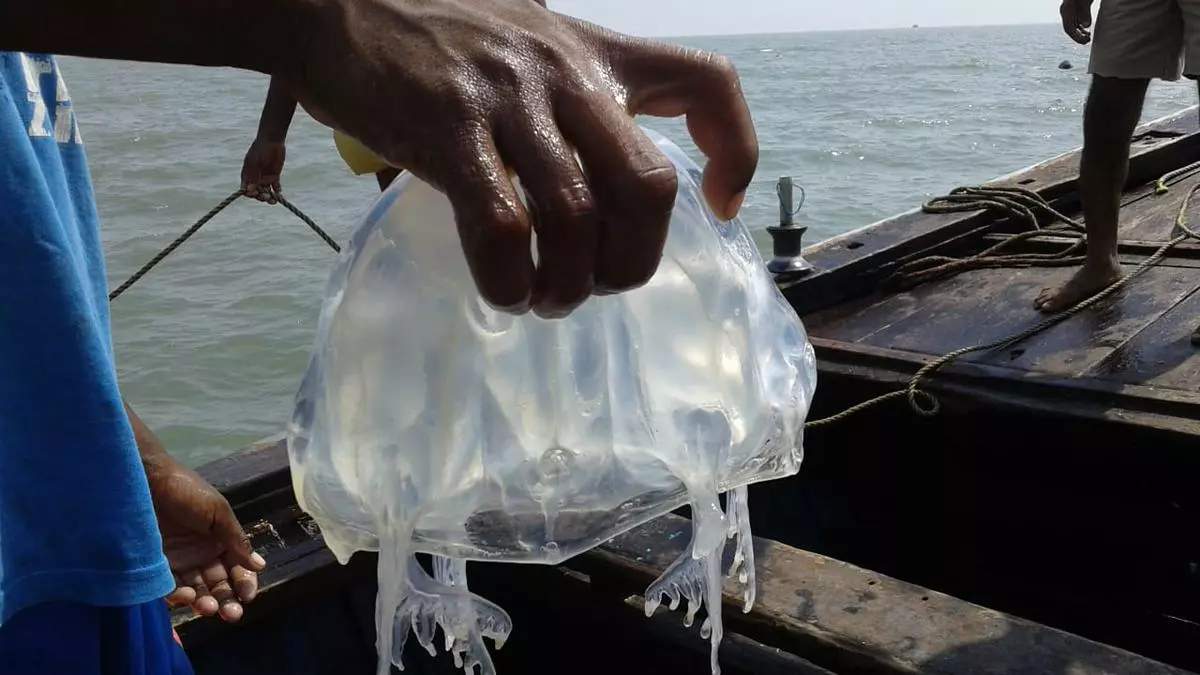Call to explore prospects of jellyfish fishery as a promising alternative
Experts at a symposium have emphasised the need to explore the prospects of jellyfish fishery, as the sector offers a potential source of income for fishermen.
However, the ICAR-Central Marine Fisheries Research Institute (CMFRI) has said that sustainable management practices, quality control, acceptance in the domestic market, and adaptation of jellyfish to fishing and environmental changes are crucial for the long-term viability of this industry.
“Jellyfish play a pivotal role in marine ecosystems and hold increasing significance in recent days in the global seafood market, providing a potential source of additional income. Sustainability remains a core focus and a cautious and well-informed approach is required to their exploitation. An ecosystem-based management strategy is vital for understanding the interactions between jellyfish and their environment and for developing effective management strategies”, said A Gopalakrishnan, Director, CMFRI.
He was speaking at a special session on ‘Jellyfish Fisheries and Trade: Status, Trends and Impacts on Livelihood’ at a symposium on Jellyfish Blooms.
Given the increased fishing effort in the coastal waters and climate change’s adverse impact, exploring the prospects of jellyfish fishery could be a promising alternative, the CMFRI Director said.
India registered a landing of 11,756 tonnes (wet weight) of jellyfish in 2021, showing the re-emerging trend of this fishery on the Indian coast. Since 2005, the jellyfish fishery has re-emerged as a well-networked enterprise and has grown significantly. The main species contributing to the fishery now include Rhopilema hispidum and Catostylus perezi in the northwest, Crambionella annandeli in the northeast, and C. orsini in the southwest”, he said.
“However, there is a lack of consumer tradition and awareness regarding their consumption in the country. Addressing this gap requires promotional initiatives to shift public perception and acceptance of jellyfish as a novel food item within the country”, Gopalakrishnan added.
Bindu J., Head of the Fish Processing Division at ICAR-Central Institute of Fisheries Technology, said India exported jellyfish products worth ₹13.12 crore during 2022-23, with most of these exports destined for China. Jellyfish are consumed in Asian countries such as China, Japan, Malaysia, the Republic of Korea, and Thailand as part of the traditional cuisine. China continues to be the world’s biggest producer and consumer of jellyfish, contributing over 60 per cent of all landings worldwide.
The commercial exploitation of jellyfish is still limited due to a lack of knowledge of fishery methods, post-harvest handling and processing, and quality standards. She proposed a comprehensive range of strategies, including targeted harvesting, formulation of post-harvest handling and processing protocols, implementation of safety standards and quality control measures, and establishing robust value chains.
